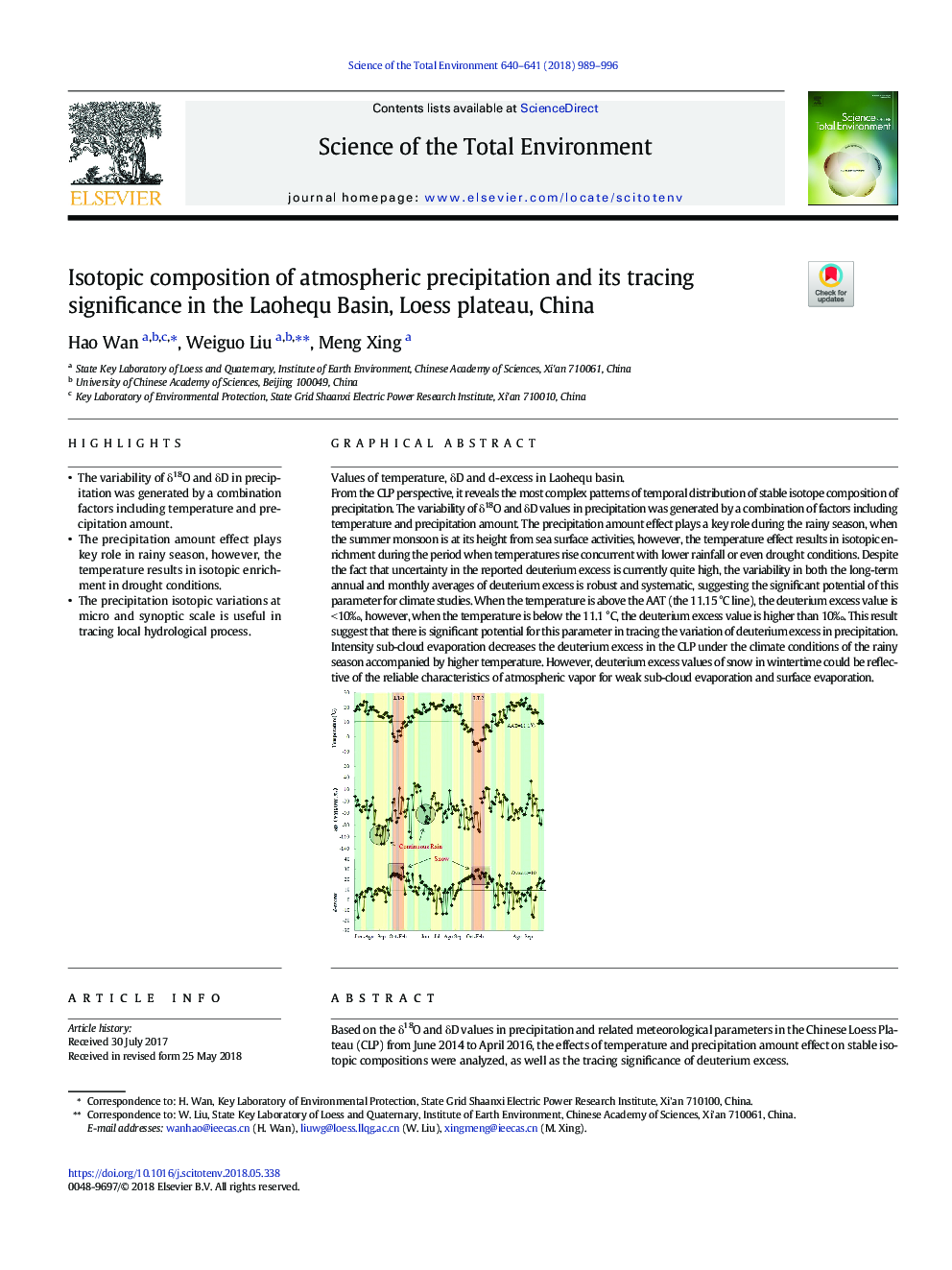| Article ID | Journal | Published Year | Pages | File Type |
|---|---|---|---|---|
| 8859111 | Science of The Total Environment | 2018 | 8 Pages |
Abstract
From the CLP perspective, it reveals the most complex patterns of temporal distribution of stable isotope composition of precipitation. The variability of δ18O and δD values in precipitation was generated by a combination of factors including temperature and precipitation amount. The precipitation amount effect plays a key role during the rainy season, when the summer monsoon is at its height from sea surface activities, however, the temperature effect results in isotopic enrichment during the period when temperatures rise concurrent with lower rainfall or even drought conditions. Despite the fact that uncertainty in the reported deuterium excess is currently quite high, the variability in both the long-term annual and monthly averages of deuterium excess is robust and systematic, suggesting the significant potential of this parameter for climate studies. When the temperature is above the AAT (the 11.15â¯Â°C line), the deuterium excess value is <10â°, however, when the temperature is below the 11.1â¯Â°C, the deuterium excess value is higher than 10â°. This result suggest that there is significant potential for this parameter in tracing the variation of deuterium excess in precipitation. Intensity sub-cloud evaporation decreases the deuterium excess in the CLP under the climate conditions of the rainy season accompanied by higher temperature. However, deuterium excess values of snow in wintertime could be reflective of the reliable characteristics of atmospheric vapor for weak sub-cloud evaporation and surface evaporation.120
Keywords
Related Topics
Life Sciences
Environmental Science
Environmental Chemistry
Authors
Hao Wan, Weiguo Liu, Meng Xing,
